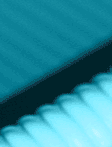 
|
Comments Clinical Trials
Review Articles FDA Information
Caspofungin is
the first of a
new class of
antifungal drugs
(echinocandins)
that inhibit the
synthesis of
β (1,3)-D-glucan,
an integral
component of the
fungal cell
wall. It is
indicated in
adults and
pediatric
patients (3
months and
older) for (1)
Empirical
therapy for
presumed fungal
infections in
febrile,
neutropenic
patients; (2)
treatment of
Candidemia and
the following
Candida
infections:
intra-abdominal
abscesses,
peritonitis, and
pleural space
infections; (3)
treatment of
Esophageal
Candidiasis; (4)
treatment of
Invasive
Aspergillosis in
patients who are
refractory to or
intolerant of
other therapies
(ie,
amphotericin B,
lipid
formulations of
amphotericin B,
and/or
itraconazole).
Its combination
use with other
antifungal
agents is of
great interest
due to poor
outcomes of
fungal
infections in
immunocompromised
patients.
Caspofungin is
fungicidal
against most
candida spp. (C.
albicans,
C.
tropicalis,
C. glabrata,
C.
lusitaniae,
and C.
krusei), but
is less active
against C.
parapsilosis.
It is
fungistatic
against
Aspergillus
fumigatus,
Aspergillus
flavus, and
Aspergillus
terreus. C.
neoformans
has intrinsic
resistance to
caspofungin, and
caspofungin is
not active
against
zygomycetes,
Trichosporon
spp. and
Fusarium spp.
Caspofungin did
not induce or
inhibited the
cytochrome P450
system. However,
cyclosporin
increased
caspofungin area
under curve (AUC)
by 35%, so
co-administration
is not
recommended
or closely
monitor enzyme
if
co-administrated.
On the other
hand,
caspofungin
decreases
tacrolimus AUC
by 30%, and
tacrolimus level
should be
monitored
closely.
Phenytoin,
carbamezapine,
phenobarbital,
rifapentine,
nevirapine, and
efavirenz may
decrease
caspofungin
concentrations.
Caspofungin is
well tolerated,
and may cause
histamine-mediated
symptoms
including rash,
facial swelling,
pruritus and
sensation of
warmth. No
dosage
adjustment is
required for
renal
insufficiency.
Decreased dose
(35 mg
daily) should be
employed for
patients with
Child-Pugh score
of 7-9.
Clinical Trials
Invasive fungal infections
Wahab MWA,
Ismail M. J
Trop Pediatr.
2011, Feb 25
[Epub ahead
of print]
Combination polyene-caspofungin treatment of rhino-orbital-cerebral mucormycosis. Reed C, Bryant R, Ibrahim AS, Edwards J Jr, Filler SG, Goldberg R, Spellberg B. Clin Infect Dis. 2008 Aug 1;47(3):364-71.
Combination polyene-caspofungin therapy appears to improve improved outcomes in patients with rhino-orbital-cerebral mucormycosis.
Liposomal amphotericin B in combination with caspofungin for invasive aspergillosis in patients with hematologic malignancies: a randomized pilot study (Combistrat trial). Caillot D, Thiébaut A, Herbrecht R, de Botton S, Pigneux A, Bernard F, Larché J, Monchecourt F, Alfandari S, Mahi L. Cancer. 2007 Dec 15;110(12):2740-6.
The combination of liposomal AmB and caspofungin appears to a promising therapy for invasive aspergillosis in patients with hematologic malignancies.
Caspofungin for the treatment of less common forms of invasive candidiasis. Cornely OA, Lasso M, Betts R, Klimko N, Vazquez J, Dobb G, Velez J, Williams-Diaz A, Lipka J, Taylor A, Sable C, Kartsonis N. J Antimicrob Chemother. 2007 Aug;60(2):363-9.
Caspofungin was effective in deep-seated invasive candidiasis, including peritonitis, abdominal abscesses, chronic disseminated candidiasis and arthritis.
Multicenter, noncomparative study of caspofungin in combination with other antifungals as salvage therapy in adults with invasive aspergillosis. Maertens J, Glasmacher A, Herbrecht R, Thiebaut A, Cordonnier C, Segal BH, Killar J, Taylor A, Kartsonis N, Patterson TF, Aoun M, Caillot D, Sable C; Caspofungin Combination Therapy Study Group. Cancer. 2006 Dec 15;107(12):2888-97.
Caspofungin in combination with a triazole or polyene might be an effective salvage therapy for patients with recalcitrant Aspergillus infections.
Combination of voriconazole and caspofungin as primary therapy for invasive aspergillosis in solid organ transplant recipients: a prospective, multicenter, observational study. Singh N, Limaye AP, Forrest G, Safdar N, Muñoz P, Pursell K, Houston S, Rosso F, Montoya JG, Patton P, Del Busto R, Aguado JM, Fisher RA, Klintmalm GB, Miller R, Wagener MM, Lewis RE, Kontoyiannis DP, Husain S. Transplantation. 2006 Feb 15;81(3):320-6.
Combination of voriconazole and caspofungin might be considered preferable therapy for subsets of organ transplant recipients with invasive aspergillosis, such as those with renal failure or A. fumigatus infection.
Review Articles
This article reviews the clinical pharmacology of caspofungin and the published experience with the drug in neonates and immunocompromised children.
This is a nice review about immunomodulation by antifungal drugs.
Adverse Drug Reactions and Warnings
FDA Information
Manufacturer/Distributor Product Information
USA
|
|
|
|
 |



